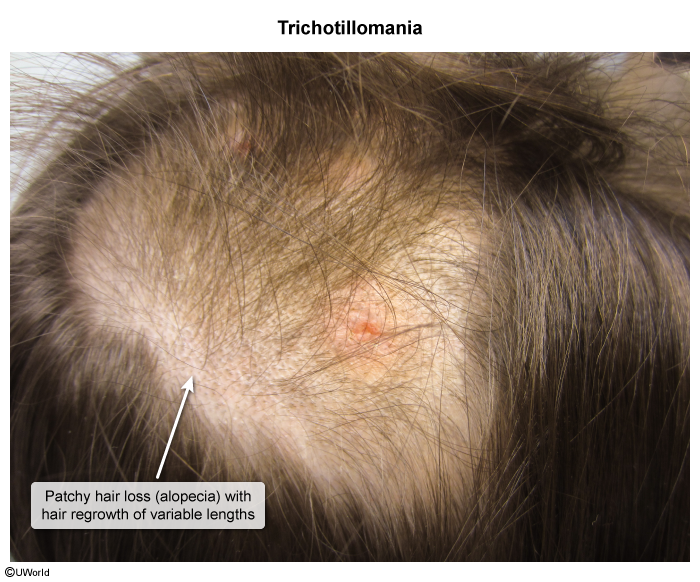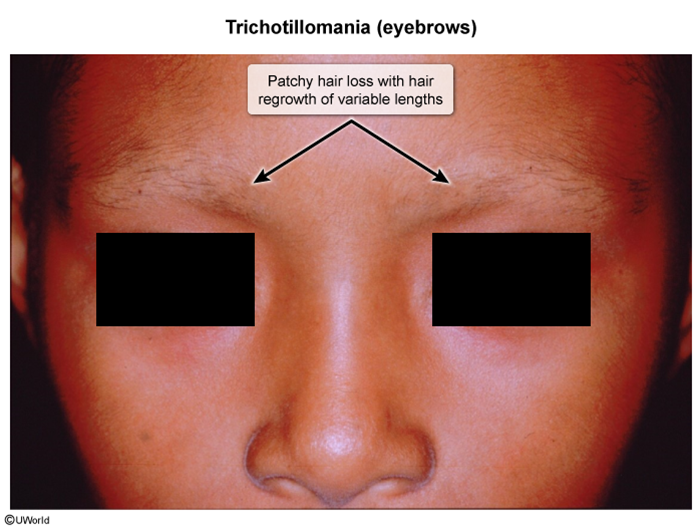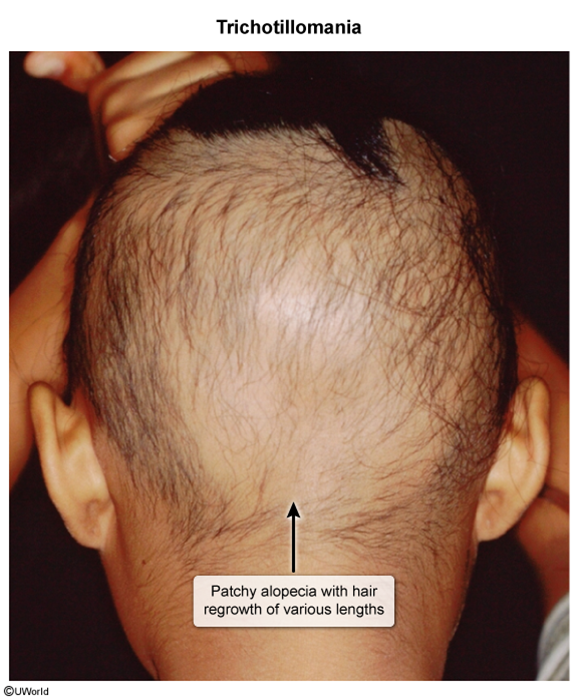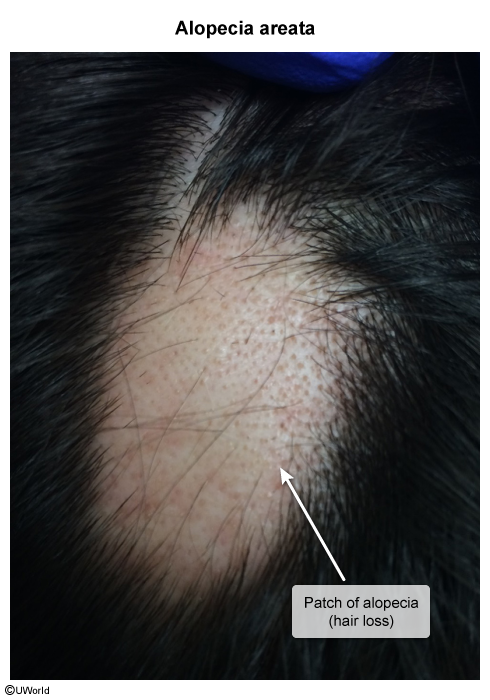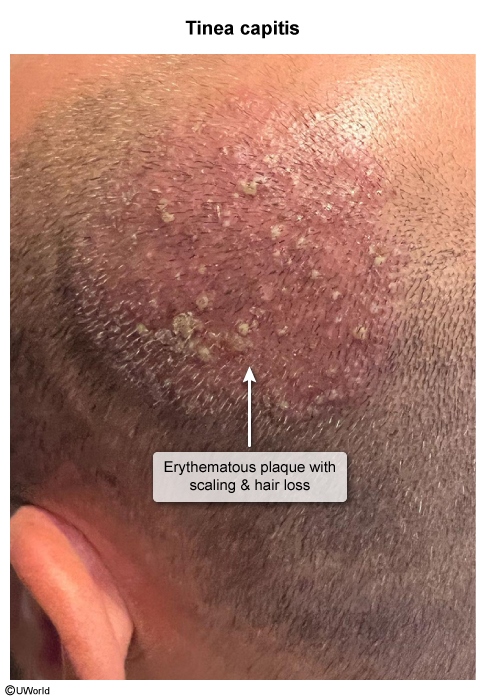Trichotillomania
Article Sections
Introduction
Trichotillomania, also known as hair-pulling disorder, is characterized by recurrent hair pulling to the point of hair loss, accompanied by efforts to decrease or stop the behaviors. The hair pulling may be preceded by feelings of anxiety or tension, followed by a sense of relief, or occur without full awareness of the behaviors. The most common sites are the scalp, eyebrows, and eyelids, though any area of bodily hair can be affected.
Epidemiology and risk factors
The lifetime prevalence of trichotillomania is estimated to be 0.6%-4%. Females are more commonly affected than males (10:1 ratio), and onset is typically during adolescence.
Several factors may increase the likelihood of developing trichotillomania, including genetic (first-degree relative with obsessive compulsive disorder) and psychologic (other habitual behaviors [eg, thumbsucking], major life stressors [eg, bereavement, trauma]) factors.
Continue Learning with UWorld
Get the full Trichotillomania article plus rich visuals, real-world cases, and in-depth insights from medical experts, all available through the UWorld Medical Library.
Images
